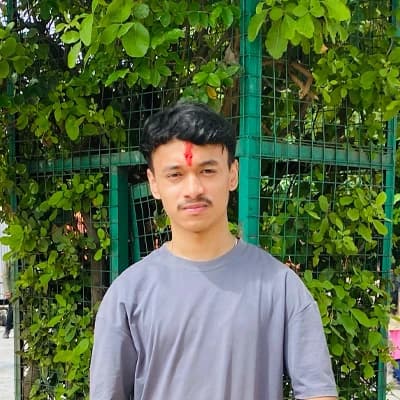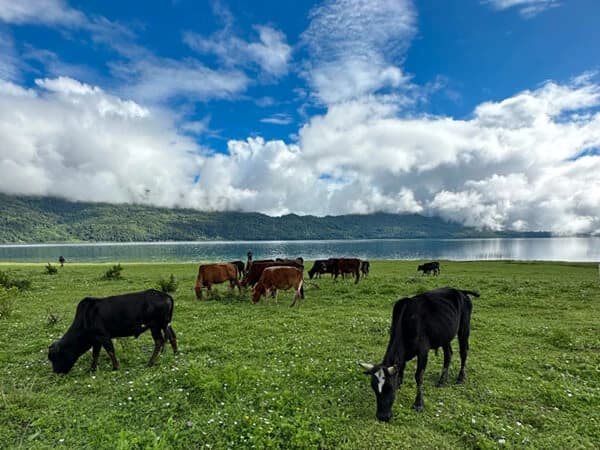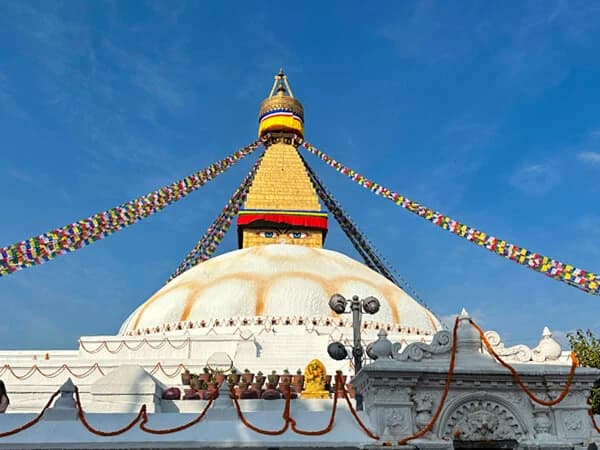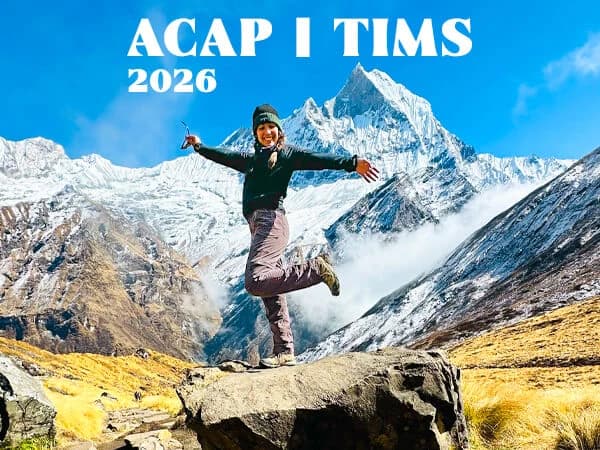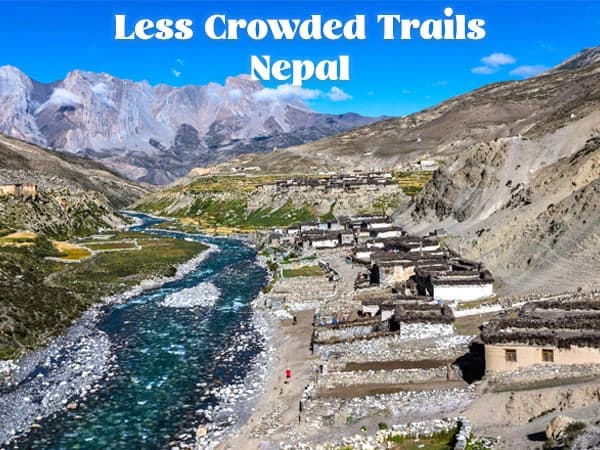Bardiya is Nepal's last great jungle frontier—a home for elusive tigers, wild elephants, and idyllic Tharu settlements. It is an off-the-track experience.
Bardiya National Park – Nepal’s Untamed Jungle Safari Destination
Welcome to the wild west of Nepal
Picture sunlight streaming through a dense sal forest. There are only occasional calls of a peacock, a snap of a twig under the foot of a tiger, and nothing else. This is Bardiya National Park, a vast, unspoiled expanse of western Nepal where nature is the only ruler.
Bardiya is off the typical tourists trail of Nepal. It offers unspoiled nature, rare wildlife, and authentic Nepali culture. If you are looking for a real Nepali jungle safari, then Bardiya is ideal for you.
👉 Explore the Rara Lake and Bardiya Wildlife Safari Tour
About Bardiya National Park
Bardiya National Park is located in the western part of the low lands of Nepal. It spans 968 square kilometers, making it the largest park of the Terai. It is one of the country's richest places from a biological viewpoint.
- Founded: 1988
- Location: Bardiya District, Lumbini Province
- Altitude: 152m to 1,499m
- Nearby town: Thakurdwara (tourist destination)
Bardiya used to be a hunting place, but it is now a National Park for the safety of its unique animals and habitats. Riverine woods, extensive sal forests, and grasslands make up this area. It is situated by the Karnali River, Nepal's longest river, as well as the Babai Valley, a critical tigers' and elephants' habitat.
Bardiya vs. Chitwan National Park
| Feature | Bardiya | Chitwan |
|---|---|---|
| Visitors | Fewer, quieter | More crowded |
| Wildlife | More tiger sightings | Rhinos easier to spot |
| Culture | Tharu villages, less commercial | Tharu culture but more tourism-developed |
| Experience | Wild and off-the-grid | Polished and accessible |
Why visit Bardiya?
Fewer people, more nature.
Bardiya is a hidden treasure. There are no crowds and no traffic congestion—just wild forests and numerous varieties of plants and animals.
Clear Jungle Adventure.
The park remains virtually unspoiled. There aren't that many tourists, and animals roam freely, giving authentic safari experiences.
Cultural Authenticity
See the Tharu villages, where you have the opportunity to view mud houses, cultural dance, and home cooking. The culture of Bardiya is authentic, not staged for tourists.
Wildlife and Biodiversity
Bardiya is among the finest locations for viewing tigers within Nepal. Over 125 Bengal tigers live there, and there are increasingly more people who view tigers now. The park is home to several Asian elephants as well as one-horned rhinoceros, a species of animal that is not very common.
On a raft ride on the Karnali River, you can see the endangered Gangetic dolphin. There are over 400 birds, such as hornbills, and kingfishers, that will delight birdwatchers.
Key Wildlife to Spot:
- Bengal Tiger: Endangered
- Asian Elephant: Endangered
- One-horned Rhinoceros: Vulnerable
- Gangetic Dolphin: Endangered
- Mugger Crocodile: Common
- Sloth Bear: Vulnerable
- Greater One-horned Rhino: Protected
- Lesser Adjutant Stork: Vulnerable
Jungle Safari Experiences
Your Nepal jungle safari is not complete until you have seen wildlife in Bardiya. The activities you can do are as follows:
Bardiya Jeep Trip
Drive through the jungle in a 4WD minus a roof. These tours provide you with good opportunities for viewing tigers and elephants. Early morning and late afternoon are the ideal viewing hours.
- Duration: Half-day or full-day
- Ideal for: Tracking tigers and rhinos.
Walking trip
Stay near nature. There is a walking safari where you are accompanied by professional guides for several action-packed activities, including encountering new tiger paw marks or observing a rhino grazing.
- Time required: 4–6
- For: Strong bond with nature
Birdwatching Tours
With over 400 species, Bardiya is a birder’s paradise. Look for rare birds like the Bengal florican, crested serpent eagle, and black stork.
Best season: Winter (Nov–Feb)
Rafting Trip on the Karnali River
Paddle through calm water and inspect the shore for wildlife. Observe the sun-basking crocodiles or approach your raft as the dolphins swim alongside.
Special part: Combines adventure with animal seeking.
Local Culture and Eco-Tourism
Meet the Tharu people
The Tharu people are integral to Bardiya. Their welcoming demeanor, colorful ethnic clothing, and folk dance bring lots of culture to your expedition through the jungle.
- Watch an evening cultural show.
- For a genuine experience, stay in a Tharu homestay.
- Try food such as dhikri, ghonghi (snail curry) served with steamed fish cooked in bamboo.
Bardiya, being one
The vast majority of the lodges contribute to local community and conservation efforts. They employ locals, generate energy from the sun, and contribute to wildlife conservation and education.
Choosing eco-lodges helps conserve Bardiya's nature as well as its culture.
Best Time to Visit Bardiya
Bardiya can be visited year-round, but each season offers something unique.
- Winter (Nov – Feb): Great for wildlife, birdwatching, cool temps
- Spring (Mar – May): It's hotter but the best season to observe tigers.
- Monsoon (Jun – Sep): Lush greenery, fewer safaris (rain)
- Fall (October): Nice weather, blue sky, pleasant
Best Time: November to March
How to Get to Bardiya
From Kathmandu to Bardia National Park
- By Plane: Fly from Kathmandu to Nepalgunj (1 hour), then drive 2.5–3 hours to Thakurdwara.
- By Bus/Jeep: Long ride (13–16 hours) from Kathmandu. Best for budget travelers.
- By Car: Is comfortable and flexible. Ideal for small groups or families.
Gate Office for the Park:
The park headquarters is at Thakurdwara, where the majority of accommodation and safari operators can be found.
Stays in Bardiya
Accommodation ranges from budget to trendy eco-lodges.
Simple Choices
- Eco-Lodges: Simple, eco-friendly, and located close to the park (for instance, Tiger Tops Karnali Lodge, Bardia Eco Lodge).
- Tent camping: A basic experience with all the necessities.
- Tharu Homestay: Homestays with actual local families are wonderful for culture lovers.
What to Expect:
- Solar-powered hot water
- Local meals
- Forest night sounds
- No crowds!
Permissions and Entry Fees
You’ll need a national park entry permit:
- Foreign tourists: NPR 1,500 ($12)
- SAARC Nationals: NPR 750
- Nepali Citizens: NPR 100
Safari booking
- Available via lodges or local tour operators
- Half-day or day safaris, multi-day Bardia safari tours.
- Keyword: Bardia safari package
Tip: Booking a package normally covers permits, guides, and accommodation.
Tour Tips for Jungle Tourists
Packing Suit Tips
- Neutral-colored clothing (no bright blue or red)
- Binoculars and camera with zoom
- Insect repellent and sunscreen
- Reusable water bottle
- Lightweight rain jacket
Safety Tips
- Stay with your guide.
- Maintain a safe distance from animals.
- Stay quiet and observant on safaris.
Responsible Travel Etiquette
- Do not feed or litter animals.
- Maintain respect for Tharu Customs
- Support local businesses and eco-lodges.
Final Thoughts
Ever wish you could see wild tigers, gliding past crocodiles, or joining the dance of the Tharu under a clear night sky? Bardiya is calling. Not another Nepal jungle safari, it is a journey into the wild west of Nepal.
From shy wildlife to welcoming hospitality, adventure, and landscape, there is soul. Go off the well-trodden trail. Find authenticity.


